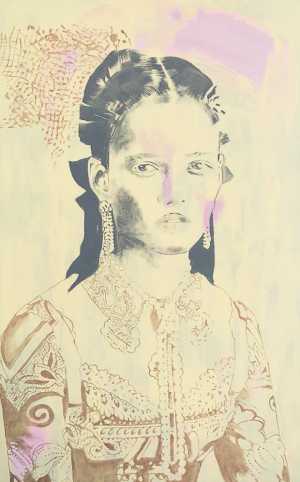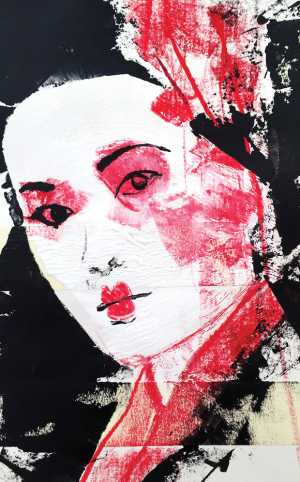If there is something that we are one hundred percent sure of, it is that art is vastly important for people. In the impact that a work of art, an artist, a color a tendency, a song ,etc can have on someone.
The art market did not appear out of the blue. As everything in history it has a reason. Deep down, since the beginning of art, people have limited it, treating it as an object of luxury.
It is worth clarifying that artists have not always been able to sell their works, sell themselves, have not demanded the right value for their work.
The art market
The Renaissance began the change in artistic terms. However, it did not take hold at European level until the 17th century arrived. At that moment, rationalism caused the reign of skepticism and human mentality began, for the first time in centuries, to truly free themselves from religious damage. The scientific revolution was on the rise and reaching its climax, which allowed the discoveries of science not to be discussed, but rather accepted without blinking.
Until then, the most common format of exhibition of the collections (generally in the hands of wealthy and counted wealthy bourgeois) were the wunderkammern (cabinets of curiosities).

During the seventeenth century Central Europe began an extraordinary development of collecting art. This made the bourgeoisie to be part of the powerful people. Those who were part of the bourgeoisie needed to manifest their new position, and found a perfect language for their needs: art.
The art market in Germany reached a turnover of almost 675 million dollars in 2018. However, believe it or not, this represents only about one percent of the world art market. According to Art Basel and UBS Global Art Market Report the art market grew 6% to an estimated $ 67.4 billion in 2018, the second highest level in a decade.
It is necessary to take into account that young artists dream that their works are part of the market since they want to be able to live on their art. This is not an easy task. The first steps in the great world of art are tedious and are dotted with many traps. Idealism and enthusiasm for art often give way to sober reality. The art market is a tough competition.
Only a few manage to settle there and earn a living with their works.

Solkes: How is the art market in Germany?
Raiko Schwalbe, ARTMUC press department: The art market in Germany is focused on booth endings – the high price segment (as you can see in a lot of new high price auction records every month) and the low price segment up to Ten thousand Euro. There is a lot of money “wating” to be invested in more then stocks, funds or houses and apartments so rich people invest in high price art too. There is a small “change” in the are that people invest more in “living” artists than before.
As Schwalbe explained the art market in Germany is divided. The “art capital” is Cologne with the German “Queen” of art fairs the ART COLOGNE and a few other little art fairs around it. Another “good area” for art is Karlsruhe or Hamburg and even Munich. Specially in Hamburg people really like to buy art because there is only one art fair each year.
Solkes: How has the art market scene changed in the last decades?
Raiko Schwalbe, ARTMUC press department: People are getting “easier in the market”, it’s not as in the end of the last century, when people didn’t want to visit a gallery because they where feeling uncomfortable by not knowing anything about art. It is completely different now: art is life, art is quality and a way to express yourself.
Promotion is not everything
Now a days, artists are being promoted like never before. They receive scholarships from art associations, cultural sponsorship and corporate sponsorship awards, among others.

The government participates in the cultural sector, in part through the promotion of non-profit artistic organizations, through its own commissions or through art academies and art colleges.
Solkes: Do artist receive support or incentives from the government, from public or private institutions?
Raiko Schwalbe, ARTMUC press department: There are many public and private scholarships. But there are even a lot more artists. Many scholarships focus on young artists who just finishing the academy and start their professional “working life”.
It is important to note that the ARTMUC AWARD is a scholarships for “artist in residence programs”. Artists have the chance to stay in a different area/studio, work, connect and exhibit in different cities or countries.
Something that must stated is that works of art must “only” satisfy the current taste and that often has to do with the happiness and subjective pleasure of the respective gallery and its visitors. Ultimately, many young artists end up in centers of artistic education or adult education, and as teachers and professors they prefer to make a living in free art.
Relationship Issue
Sometimes it seems that the art world is simply a “stage of relationships.” It is not always the best thing, but the best known artist tends to receive an exhibition, people buy their work or sometimes receive a prize. I mean, those who have connections seem to go much further. So, networks often seem to be more important than quality and talent. The right connections and the ability to “network”, together with a certain persuasion and perseverance, are undoubtedly important criteria for young emerging artists.
The talent must exist, without a doubt, the quality is correct. However, it is also necessary to have a certain sense of reality and a realistic assessment of the situation itself.

In general terms, the art industry is very difficult. Only very few artists can live from their profession or their passion and passion. Even young artists have to pay rent and earn a living (obviously). They not only compete with many renowned artists, but also with countless emerging artists in the competition for collectors and potential buyers of their works.
Solkes: What does an artist need to do to make himself stand out?
Raiko Schwalbe, ARTMUC press department: Self-Marketing, that’s the most important thing today. Old thinking structures like “why should I pay to present my art works in an exhibition” are running out. The market ist changing and artists need to realize those changes are happening. Self-promotion starts with a webiste, social media and presentation at art fairs and exihibitions world wide.
Solkes: Are there new and exciting artists, or do they all copy each other’s style?
Raiko Schwalbe, ARTMUC press department: Well it’s the same like in the music business: there are always samples of others inside. I don’t really know any artist who was “invented a new brand, something never seen before” art within the last decades. Of course actual political or demographical issues influence the art scene but it’s more or less an advancement of existing things.
Spaces for art
Fewer and fewer galleries mean a growing lack of exhibition space and less and less chance of a boost for emerging artists. But, many artists help themselves, join project-related initiatives, organize courses and training on their own.

Another way of saying it is: art needs to be seen by everyone, it needs publicity!
Meanwhile, some more multifaceted forms of marketing have been established that offer new opportunities and opportunities for young artists and Internet connoisseurs.
Solkes: Are there enough spaces for art (for artists to showcase their work)?
Raiko Schwalbe, ARTMUC press department: Unfortunately not – the high prices in rent a space in each city (even in Berlin) makes it hard for artists to show their works. There are too many artists for the galleries. Further more, galleries really have to check their business models regarding all the fixed costs such as rent a space, storage, man power and so on that even a lot of galleries close down within the last years.
To begin with, figures show that the art market needs special events, fairs, vernissages and auctions. It is increasingly important if visitors feel they have been at the correct “party”. Artists are also necessary in this context: it is no longer enough that a work of art only “please”. Especially a young artist, but unknown, has to be tangible, available for personal discussions and discussions, able to explain and sell his work.
Moreover, niche art fairs such as ARTMUC are ideal for this purpose and are economic platforms for the car -marketing in order to give young artists access to a wide audience.
There must be a certain closeness between the artist and his potential buyers. It is a prerequisite for possible economic success.

Schwalbe was quick to point out that art fairs have grown a lot within the last decade as a marketing and presentation platform. It’s just about the process: as a participant, an artist or a gallery you can have personal contact and talk to thousands of interested visitors within a couple of days.
Money and culture
Today, cultural sponsorship is on an equal footing with other forms of private participation, such as donations, foundations or other patronage initiatives.
As an element of a living corporate citizenship, cultural sponsorship has become an important part of the combination of communication and marketing of many companies, regardless of their size, number of employees or industry.
Especially in times of economic crisis, cultural sponsorship as an important communication tool is of particular importance.
Through the combination of cultural promotion and simultaneous communication of the sponsoring company, cultural sponsorship is a particularly suitable instrument of corporate communication: the communicative power of culture is strong, even when compared to traditional advertising. The buyer lives with art until the market recovers. This emotional dividend makes collecting and buying art so attractive.


